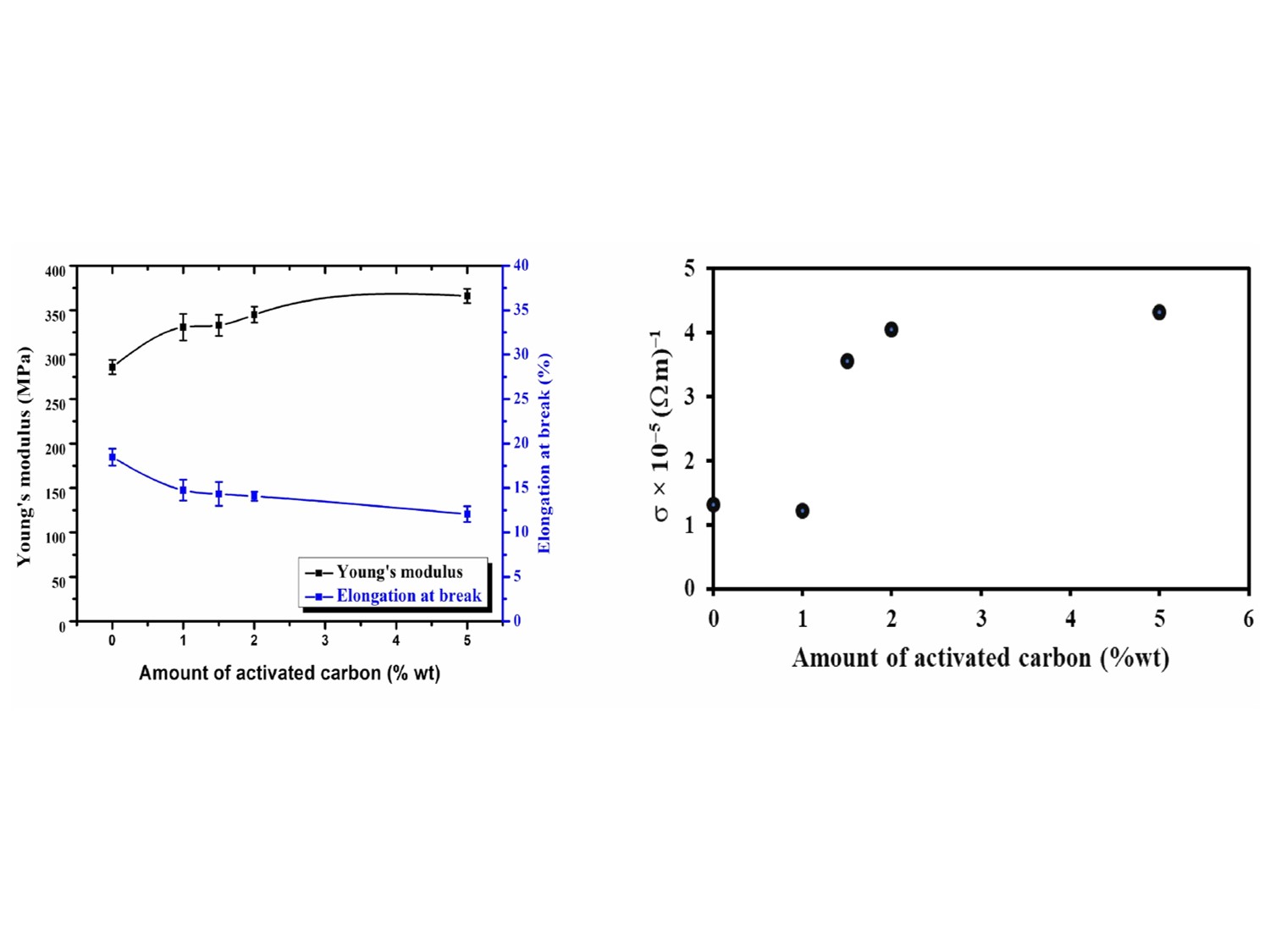Properties of Biodegradable Poly(butylene succinate) Filled with Activated Carbon Synthesized from Waste Coffee Grounds
Keywords:
Poly(butylene succinate), Activated carbon, Mechanical property, Electrical conductivityAbstract
Activated carbon (AC) synthesized from waste coffee grounds by using microwave irradiation method was mixed with poly(butylene succinate) (PBS) in a batch internal mixer. The concentrations of AC were used at 0, 1, 1.50, 2 and 5 %wt. The mechanical properties of PBS/AC composites, such as tensile strength, impact strength and hardness were investigated. The electrical and morphological properties of neat PBS and their compounds were examined. Moreover, the crystal structure of PBS/AC composites was observed by the XRD technique. The result showed that AC could enhance the Young’s modulus and hardness of PBS. The impact strength, tensile strength, and elongation at break decreased with an increase in the volume of AC. The crystal structure of neat PBS was changed with the AC concentration. The AC content also affected the electrical conductivity. The concentration of AC at 1.50 %wt was the percolation threshold. On the other hand, the addition of AC led to smooth fractured surface of the composites.








